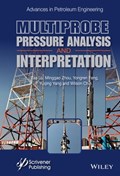A popular 1990s formation tester with a single "pumping" probe and one passive "observation port" displaced 180 deg away, designed to measure pressures at two locations for permeability prediction, encounters well known detection problems at low mobilities. This book, using aerodynamics methods, explains why and also reveals the existence of a wide stagnation zone that hides critical formation details. And it does much more. An exact analytical solution is used to validate a new transient, three-dimensional, finite difference model for more general testers, one that guides new hardware designs with independent azimuthally displaced probes having with different rates, flow schedules and nozzle geometries, supports interpretation and formation evaluation, and assists with job planning at the rigsite. The methods also apply to conventional tools, allowing comparisons between older and newer technologies. Importantly, the authors introduce a completely new three-probe design with independently operable active elements that eliminate all older tool deficiencies.
Numerous subjects are discussed, such as pressure transient analyses with multiple operating probes, supercharge analysis with invasion and mudcake buildup, accurate and rapid calculations that allow more than 1,000 simulations per minute, extremely rapid batch mode calculations using convergence acceleration methods, rapid fluid withdrawal with minimal dissolved gas release, dip angle, heterogeneity and anisotropy evaluation, and many other topics. In addition, tool operation sequences, detailed engineering and design functions, field test procedures and laboratory facilities, are discussed and illustrated in photographs that go "behind the scenes" at one of the world’s largest international oil service companies. The book hopes to educate new engineers and veteran engineers alike in hardware and software design at a time when increasing efficiency is crucial and "doing more with less" represents the new norm.

